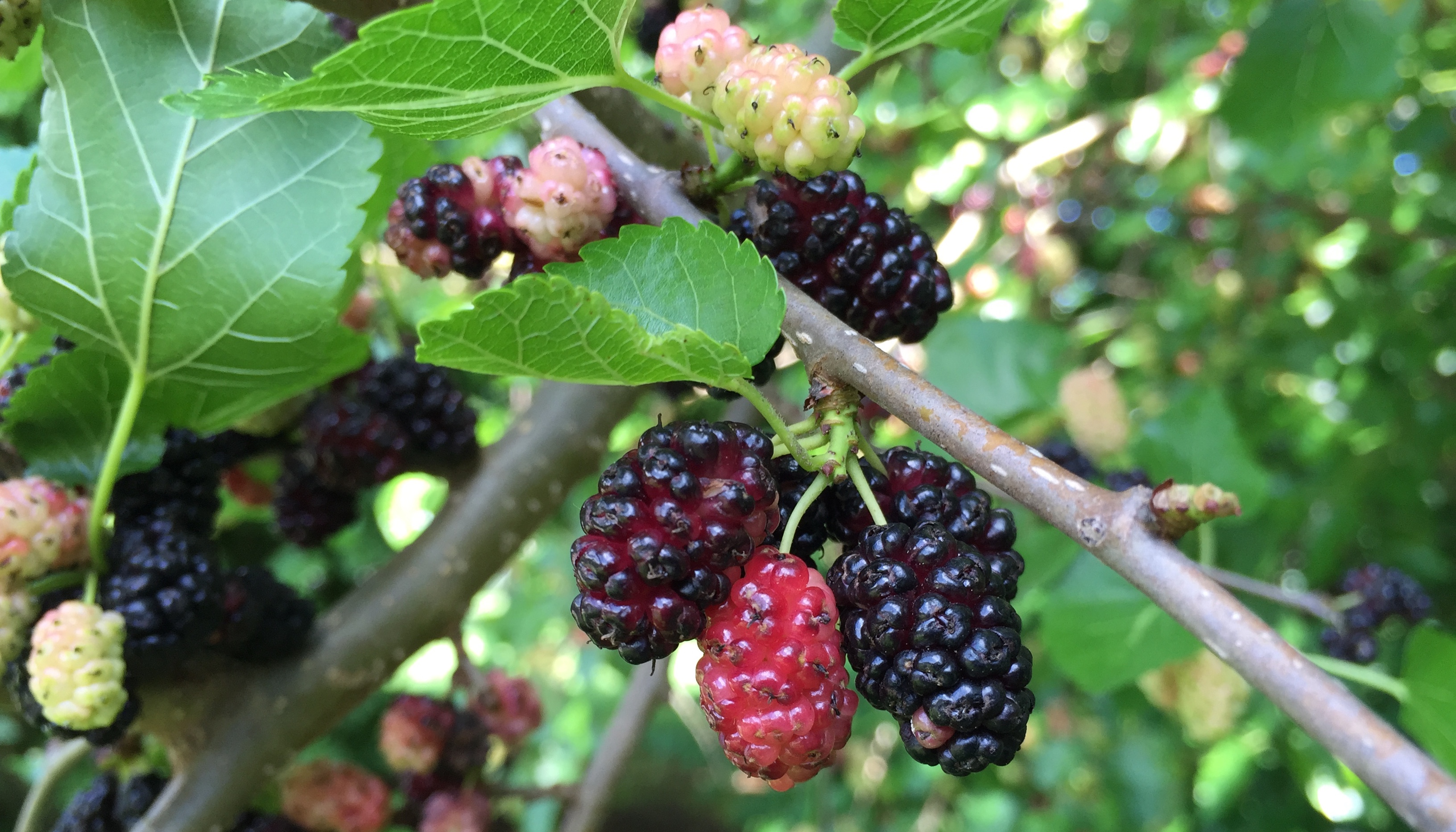
Red Mulberry (Morus rubra). (By: Famartin CC BY-SA 3.0)
It is with great excitement and joy, I’d like to introduce to you the first post in a series of growlogs detailing my adventures with growing rare and beautiful Red Mulberry Trees. The first post will discuss what is mulberry tree, why I decide to focus on a red mulberry and how I am growing them.
Again this is the first post, you can see the newer posts if you like and return back this post:
- Red Mulberry Growlog #1
- Red Mulberry Growlog #2 (Coming soon)
Currently this series has not ended so don’t forget to follow this blog if you are interested.
How did I learn about mulberry trees?
In 2019, my wife and myself were taking walk in a park on a sunny summer afternoon. During the walk we came across - what appeared to be - a gigantic raspberry tree with an abundance of berries! I couldn’t believe raspberry bushes grow the size of trees. I walked off the trail and towards the raspberry tree to snap the following picture you see:
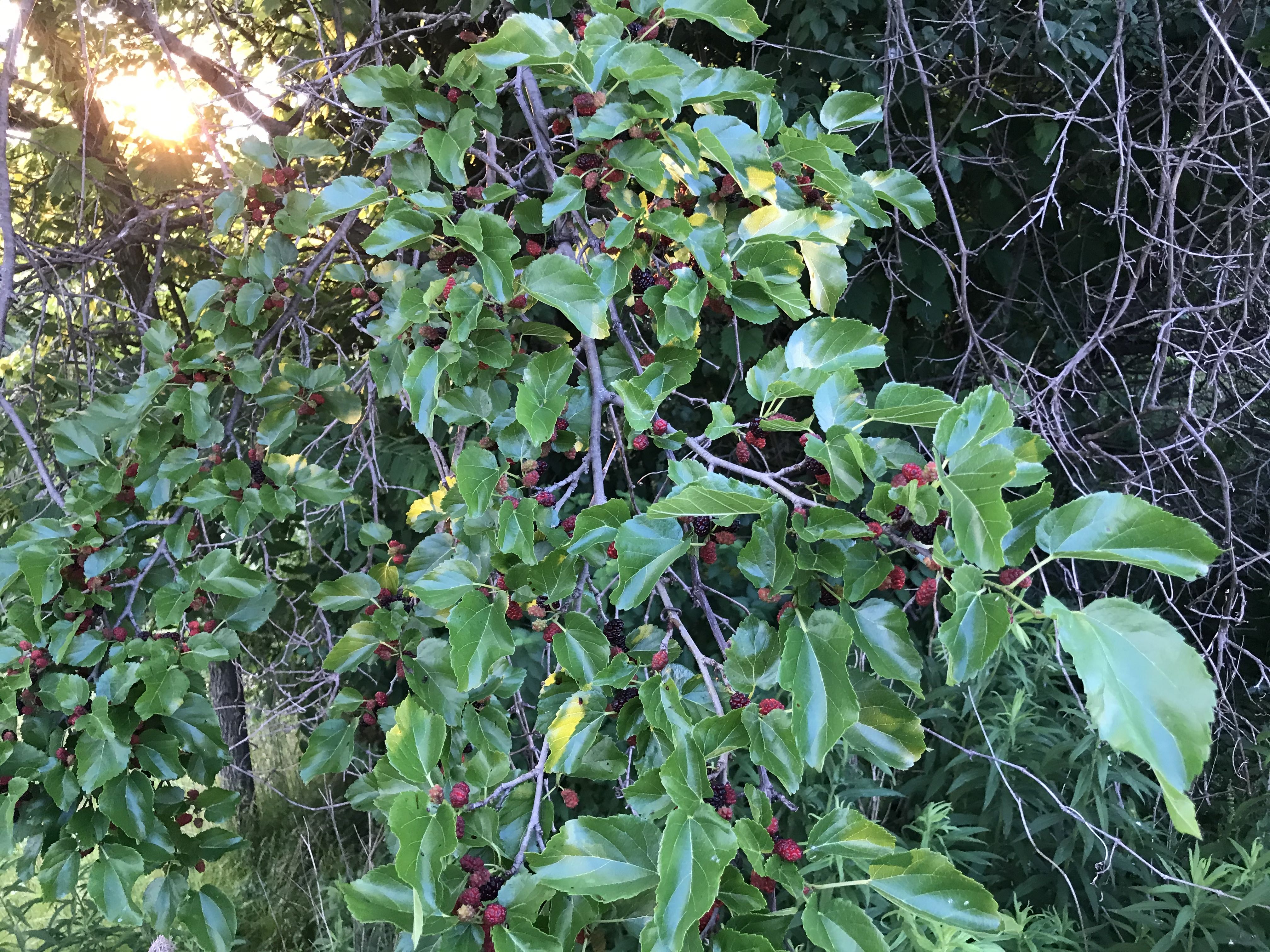
Upon approaching the raspberry tree, I noticed the berries looked different … more elongated - that’s not how raspberries look like! The surprise of my observation really piqued my interest. So excited by this discovery, I began doing some research online.
The search results pointed to a mulberry tree and when I ran it through plant identification software, the results came back as white mulberry.
This whole research led to me to learn about a new genus of fruit bearing plants called Morus. Within this species, the most well know varieties are:
- White Mulberry
- Black Mulberry
- Pakistan Mulberry
- Red Mulberry
The North America native variety is called the red mulberry while the white mulberry is typically native in China and India. The black mulberry is native to the middle east.
The next day we walked by the park again and I picked a mulberry and eat it! It was delicious and luckily for me, the research was correct that I have indeed identified a mulberry tree. But why was there a white mulberry tree growing here?
My excitement turned to concern.
Why did I decide to grow red mulberry trees?
Throughout my research, I discovered that our provincial government had released an informative tree atlas resource which you could lookup different trees which are native to our province. I found the red mulberry in the listing and noticed the quote:
Red mulberry is under threat from habitat loss and hybridization with the imported white mulberry from Asia. Snails and slugs also damage young seedlings.
Upon doing some more digging, I discovered this tree species is indeed listed as endangered by the provincial government.
Why are red mulberries endangered? Turns out white mulberries are to blame. The following quote from TreesCanada explains that:
“[At] most Ontario locations of Red Mulberry, White Mulberry is hybridizing with the native tree such hybridization could eliminate the endangered Red Mulberry by ‘genetic swamping’”
- Source: TreesCanada
And if you want to learn more about why genetic swamping happens, there’s a scientific article titled “Asymmetrical introgression between two Morus species (M. alba, M. rubra) that differ in abundance “ which you can read if you like.
Knowing this, I decided to go on this grow-adventure to see if I can help grow some of these beautiful native trees which will reward anyone that comes across with wonderfully delicious berries to eat!
What is a red mulberry tree?
Before I begin, I want to state that I don’t have any formal educational training in dendrology / biology / etc and what I write below a paraphrased summary from my research. My main sources are from the following:
- [0] http://natures-restaurant-online.com/Mulberries.html
- [1] https://wildfoodshomegarden.com/Mulberry.html
- [2] http://www.plantillustrations.org/species.php?id_species=681624
How are its characteristics?
- Plant Size: Up to 20 meters (65 feet) tall. [0]
- Leaf Shape: Ovate to heart shaped, with or without lobes. Generally, on smaller trees many of the leaves have irregular lobes, on more mature trees there are fewer leaves with lobes. [0]
- Leaf Phyllotaxis (Leaf Arrangement) on branch: Alternate [0]
- Leaf Size: 7-14 cm (2 3/4 to 5 1/2 inches) long and 6-12 cm (2 1/3 to 4 3/4 inches) wide [0]
- Leaf Margin: finely Serrated (saw toothed edge) [0]
- Leaf Notes: A rough, scratchy, hairy texture on the upper side of the leaf, and soft hairy texture on the underside. Normally this feature can be used to distinguish from the White Mulberry, but since they are hybridizing, this feature is not as reliable [0]
- Flowers: Catkins of tiny flowers. Male flowers are light yellow on a green catkin. Female flowers are white on green catkins. [0]
- Fruit: Looks like a Blackberry or Raspberry. First green, then red (Raspberry color), then a dark purple (Blackberry color). 2-3 cm (4/5 to 1 1/5 inches) long. If a pure Red Mulberry - the taste is rich and sweet, if a hybrid with the White Mulberry, the taste can vary from good to dull. [0]
- Bark: Twigs: reddish brown. Small trunks and branches: reddish brown. Main trunk on mature tree: Grey, broken in to vertical sections, or plates, with reddish tint to areas inside fissures. [0]
What are some more details?
- Duration: Lives up to around 125 years old [0]
- USDA Plant Hardiness Zone: 4-9 (More information on hardiness zones) [1]
- Soil pH: 6.0-7.5 [1]
- Habitat: Highly adaptable to most any soil type except very acidic. Can tolerate wide range of moisture. Does better in full sun, but will survive shading except for very dark shade. [1]
How does it look?
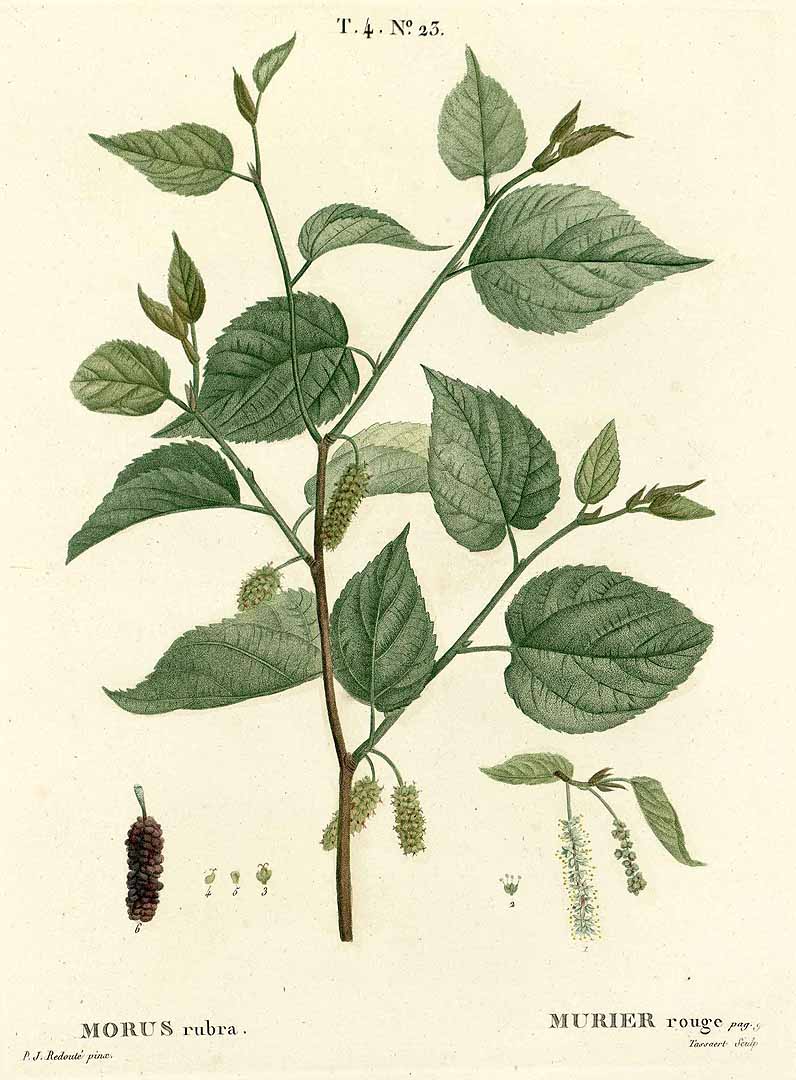 Red Mulberry (Morus rubra) illustration. (By: Duhamel du Monceau, H.L., Traité des arbres et arbustes, Nouvelle édition [Nouveau Duhamel], vol. 4: t. 23 (1809) [P.J. Redouté] drawing: P.J. Redouté)
Red Mulberry (Morus rubra) illustration. (By: Duhamel du Monceau, H.L., Traité des arbres et arbustes, Nouvelle édition [Nouveau Duhamel], vol. 4: t. 23 (1809) [P.J. Redouté] drawing: P.J. Redouté)
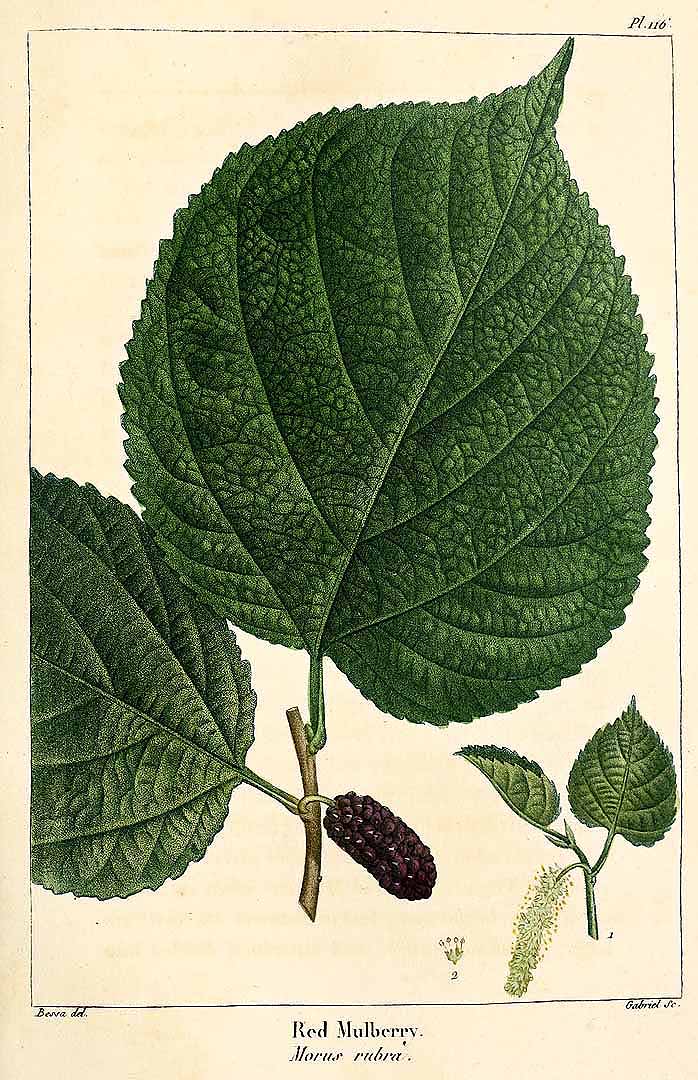
Red Mulberry Leaf (Morus rubra) illustration. (By: Michaux, F.A., North American sylva (1817-1819) N. Amer. Sylv.)
How did I begin growing?
Before I began, I had to take into account that red mulberries are at risk to hybridize with the white mulberries when making any seed purchases.
I committed to grow these beautiful trees and my search for a seed supplier began! After spending a few days researching seed suppliers, I reached out to a few suppliers to get a response to the hybridizing problem. In the end, I recieved the following response from The Incredible Seed Company:

Hurray! My order was placed and I received the seeds.
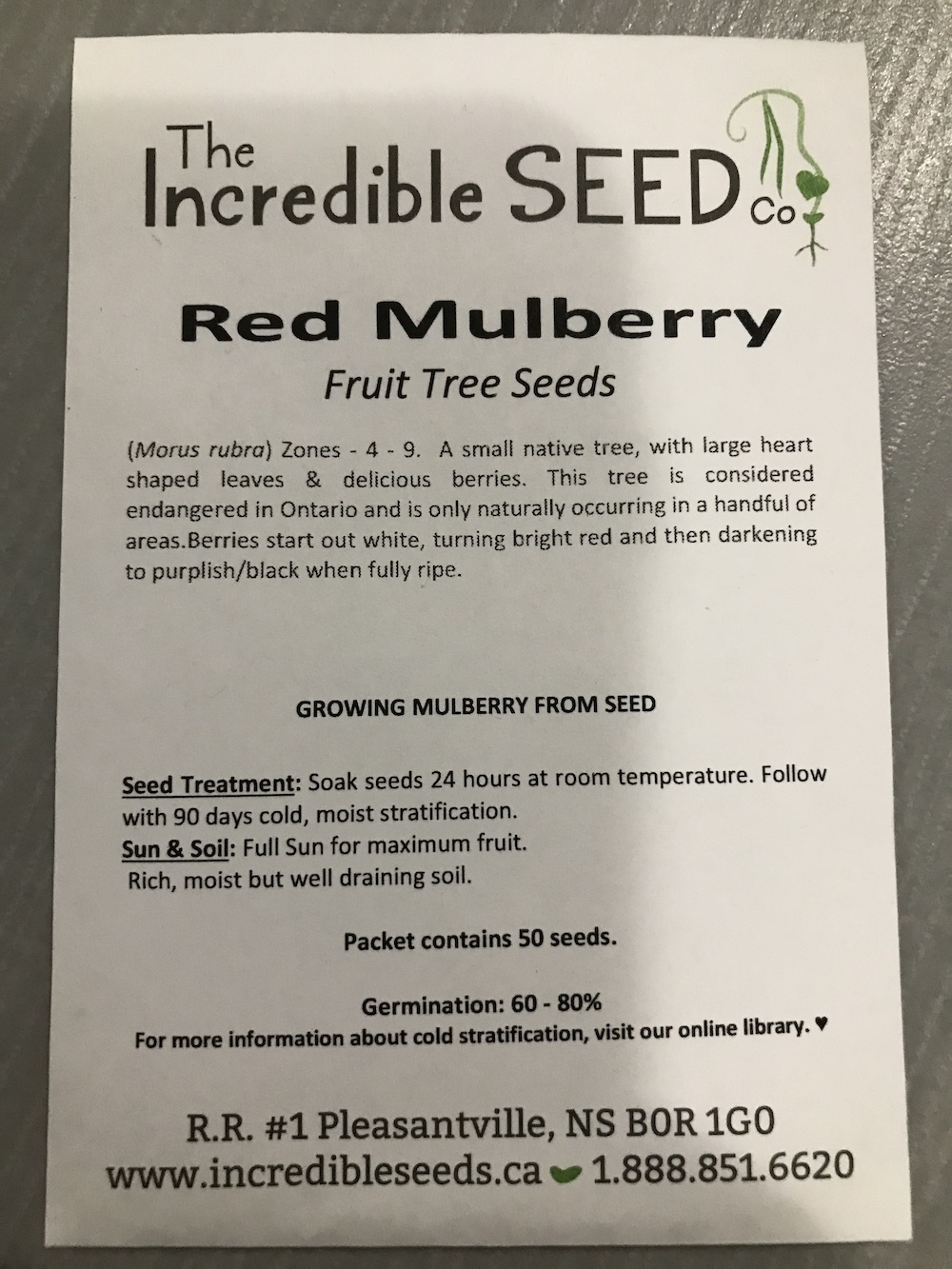
I placed the seeds in water for 24 hours.
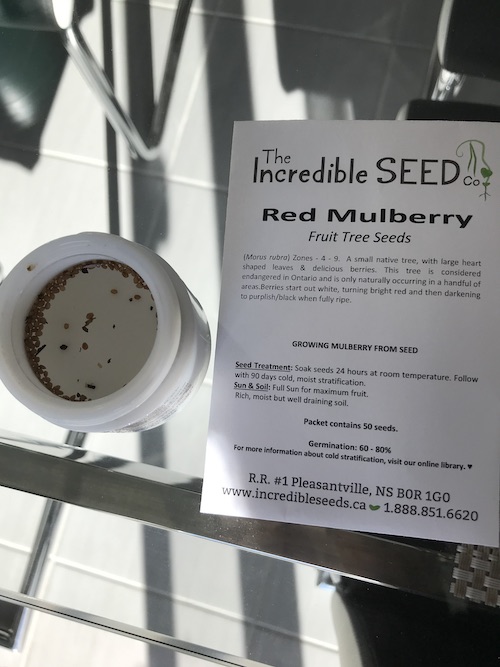
When time elapsed, I planted the seeds in a container and placed it in the garage for cold stratification. This was on 2020-11-04 and I noticed first sprouts on 2020-11-18. Here is the first picture of the growth:
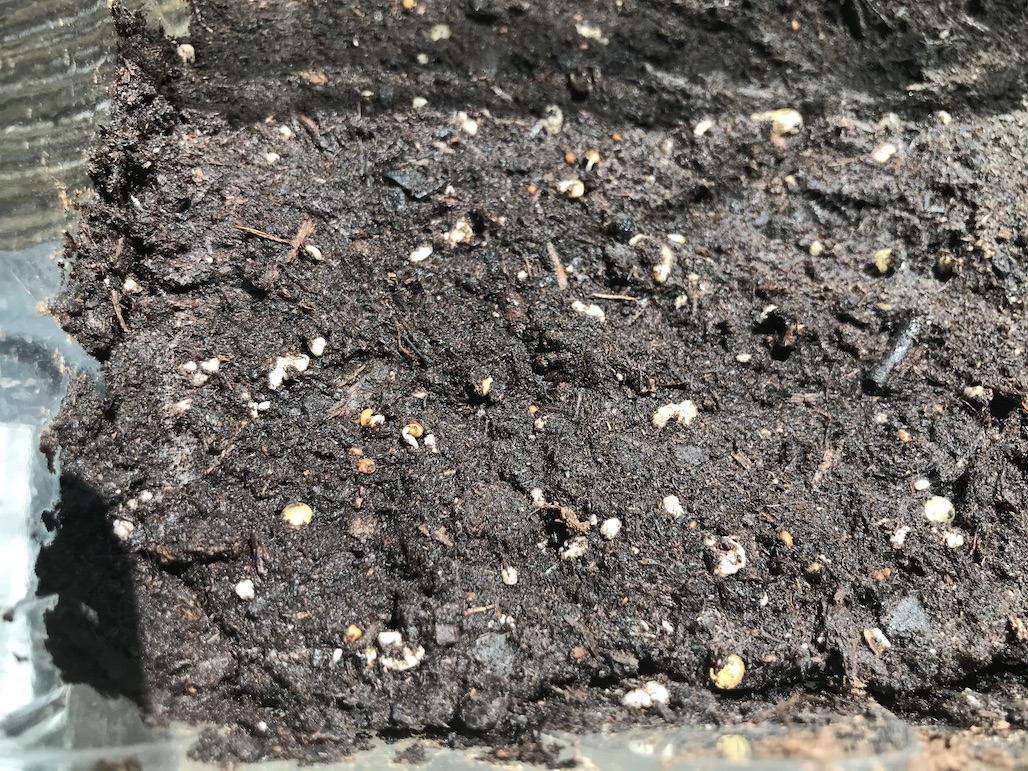
That’s it for our first growlog for growing red mulberry trees! If this series interests you then please consider subscribing to the RSS feed to get the latest updates.